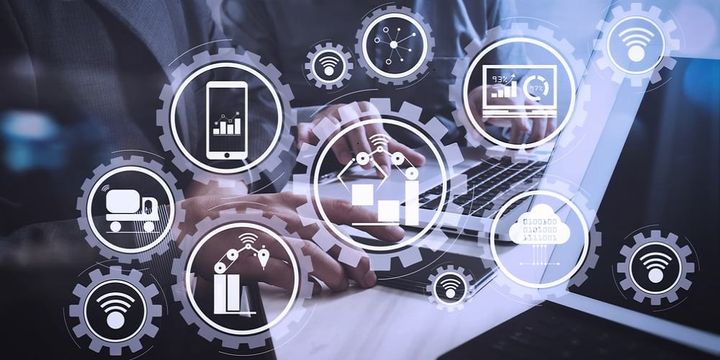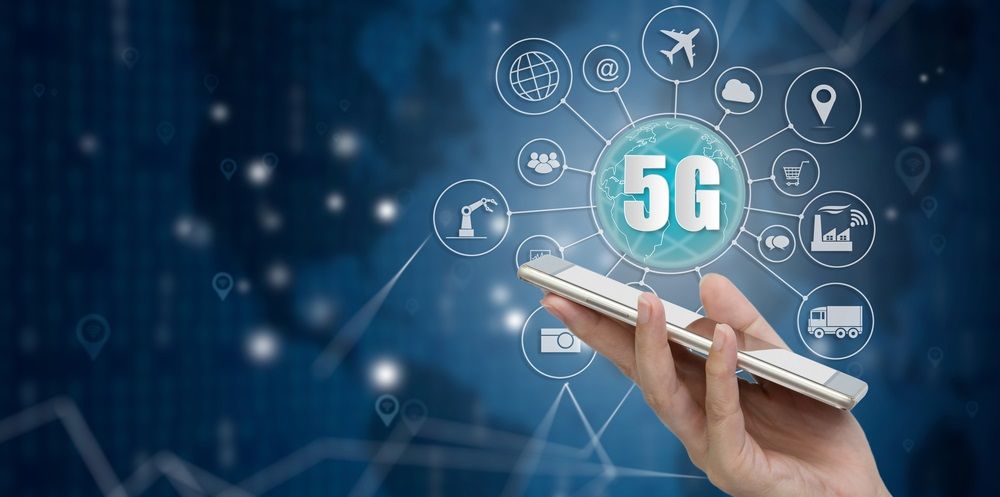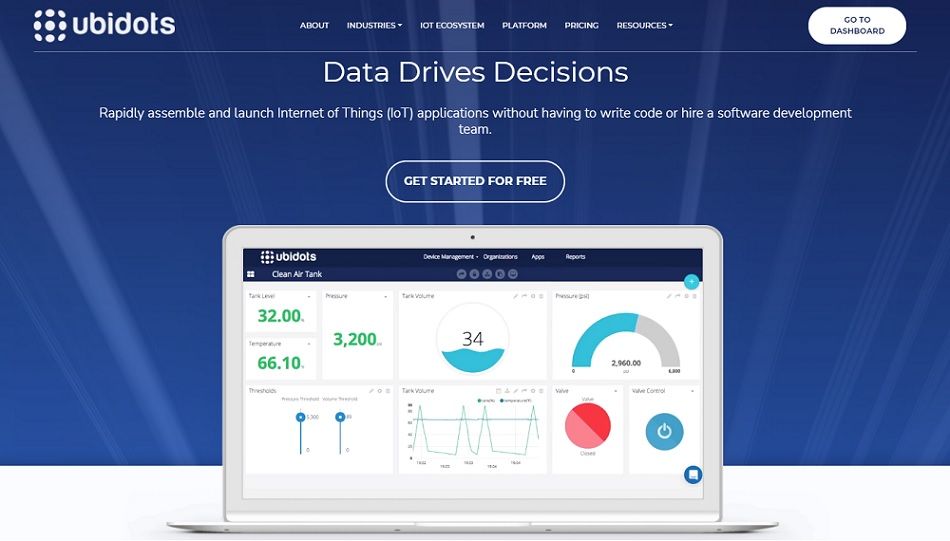The Connection Between Embedded Devices (Systems) & IoT
If you are exploring the world of IoT using modern embedded systems, this article will help you understand the difference between embedded systems and IoT.

Among so much hype and rapid evolution of Industry 4.0 technologies, we often find it challenging to comprehend fundamentals. So, if you are learning the fascinating world of IoT or building a new use case, it is imperative to understand the difference or similarities between embedded systems and IoT.
Although many IoT embedded systems courses help you with more advanced concepts, this article will touch on the basics for developing an understanding of IoT-embedded system projects.
What Is an Embedded System?
An embedded system is the core part or the computing system of any electronic device. These low-power consumption units consist of a microcontroller or microprocessor within an integrated circuit (IC) to do a specific job.
From microwaves to mobile phones and spaceships to drones, embedded systems are ubiquitous among all electronic devices.

How Are Embedded Systems and The Internet of Things Different?
An embedded system may or may not connect to the internet. Traditionally, it was built for a dedicated purpose with limited connectivity with other devices. The objective was to process the real-world information from sensors in real time.
While the embedded systems enable this data to be sent and often interpreted locally, the internet transmits this data to and from online (cloud) services.
So, when you want an embedded device to talk to an ecosystem (other embedded systems, cloud, internet), communication channels like WiFi, RF, 5G, LoRa, and others come into play.
Hence, IoT wouldn’t have existed without the embedded systems and the internet (or any connectivity) that process and transmit data, respectively.
What Are the Key Elements of an IoT Embedded System?
Typically, an embedded system is associated with hardware having microcontrollers like Motorola 68HC11 or microprocessors like 8085.
However, there is another critical component to run the embedded system—i.e., the software. The software can be in the form of firmware and bootloaders to drivers, embedded operating systems, user interfaces, and beyond.
Similar to how the internet has enabled embedded systems to evolve into IoT embedded devices, embedded software allows them to function and communicate beyond the system itself.
This entire network of embedded systems, communication channels, and software that performs these tasks is called the Internet of Things.
According to Gartner, “the Internet of Things (IoT) is the network of physical objects that contain embedded technology to communicate and sense or interact with their internal states or the external environment.”
How Is an Embedded System Used in IoT?
The ‘Thing’ in the IoT is an embedded system. So, in a way, embedded systems are a subset of IoT. While IoT is a newer concept, embedded systems have been available since the advent of the electronics era.
So, a standard LED TV is an embedded system, while a smart TV is an IoT device. It helps to learn this rule of thumb:
“All IoT devices have embedded systems, but not all embedded systems are IoT.”
What Are IoT Embedded System Examples?
If this sounds confusing, let’s understand it with a practical example. Imagine you have a Smart AC unit in your living room. The term ‘Smart’ makes it a prominent IoT device, and the AC unit is a "thing" connected to the “internet” via WiFi.
Now, when you switch on the air conditioning unit of your home remotely using your mobile, you are using another “thing”, i.e., your phone connected to the “internet” via 5G. In the above example, the “things”—AC and your mobile phone—are “embedded systems.”
The connectivity provided via Wifi/5G is the “internet.” Hence, the ecosystem of the “Internet of Things.”

What Connects IoT and Embedded?
There is also a third element that connects the embedded systems with IoT. It is the “software” that can be an app on your mobile phone or the firmware on embedded systems.
All you need to do is, add a layer of information and communication technology to your embedded systems to convert them into an IoT system.
Another example is a pacemaker. It is a low power consuming device placed in the patient’s heart to read abnormal heart signals and rectify them by pulsating accordingly. So, this is an embedded system.
If we make a pacemaker to transmit the pulse reads via BLE to the person’s smartphone or a bedside console and then via the 5G to a cloud server, we can log this data and check for any abnormalities.
Advanced analytics or AI can alert the concerned doctor with the patient’s underlying condition and relevant stats. This is the Internet of things.
Note that BLE/5G is the communication network and application on the smartphone or bedside console is the software. The structure together with embedded systems like the pacemaker, smartphone, and bedside console, is the Internet of Things.
Why Do IoT Embedded System Projects Gain Popularity?
Over the last decade, the Internet of Things (IoT) has proven its potential in delivering values, enabling disruptive business models, seamless customer experiences, productive resources, and resilient value chains.
By 2025, there will be more than 30 billion IoT connections—that is, about four devices per person. According to McKinsey, by 2030, total revenue for 5G IoT embedded modules will increase from about $180 million to almost $10 billion.
While IoT taught us to monitor and manage physical objects, a vast amount of data has led us to better avenues for decision-making. Further, better affordability of sensors and faster communication network has raised the strategic importance of IoT.
How To Fast-Track IoT Embedded System Development?
IoT embedded systems have touched every facet of our life. Whether it’s a modern supply chain where IIoT is enabling consumers to track their shipments in real-time or a next-generation healthcare service using IoMT to deliver critical therapies outside the hospital’s walls, embedded systems have become widespread.
IoT embedded systems have a tremendous amount of potential across a variety of business cases, and advanced technology development plays a significant role in this regard.
Launch IoT Applications without Having To Write Code
While IoT presents numerous use cases to solve real-world problems, creating the platform is where most entrepreneurs or visionaries struggle. An IoT project has many complex aspects — from hardware connections to event-based workflows, and from cloud to secure data services.
Learning to code is not a quick solution and finding the right software engineer — knowledgeable in both embedded systems and IoT — is harder than it sounds.
Ubidots is the IoT platform for businesses and developers alike. It offers Point-and-Click Cloud application development capability via Ubidots’ intuitive, code-free application development tools.

You can connect your embedded system or digital services and deploy custom applications to end-users with your Company’s branding and URL, the way you want.
Ubidots is the IoT platform for businesses and developers alike. It enables users to quickly connect sensors to track data in real time or pass that data on securely to applications where you can gain actionable insights from the collected sensor data.
Contact us to learn more about how Ubidots can help you embrace the power of IoT for your business and your customers.
Originally published 30 Nov 2021
Frequently Asked Questions
What is the difference between IoT and embedded systems?
IoT is a conceptual framework that promotes the idea of devices communicating with each other over the internet. On the other hand, embedded systems are part of electronic devices which operate but may or may not connect to the internet. You can probably call any device with firmware as an embedded system. However, IoT is primarily marketing, not an engineering term.
Are embedded systems used in IoT?
Yes. Any IoT device will have an embedded system. IoT is nothing but connecting and controlling smart devices (read as embedded systems coupled with network connectivity) through Internet protocols.
What is the use of the embedded systems in IoT and IIOT?
Embedded systems in IoT are used in home automation, health and wellness, and security, among others. Likewise, an embedded system in IIoT is used in remote sensing and control for water, gas, utility meters, shipping/transportation management, robotics integration, and so on.
What is the primary function of an IoT device embedded system?
IoT device embedded systems are a combination of hardware and firmware along with internet connectivity to perform specific tasks. These devices transfer real-time data over the internet for a broader use case like monitoring, tracking, analysing, or more.


